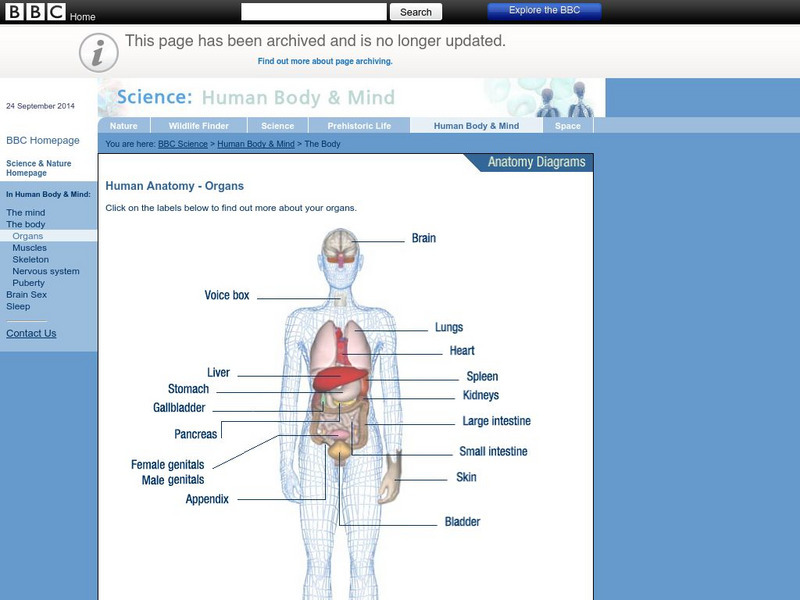Hi, what do you want to do?
Curated OER
TE Activity: Sound Line
Young scholars investigate the decibel readings of various noises. They determine why high-level readings damage hearing. Students arrange sound from the lowest to highest decibel levels when they written on a piece of paper.
Curated OER
Frogs
Students explore the external and internal structures of an amphibian and how frog anatomy compares to human anatomy. They collect pictures of a frog using a digital camera, create a web page, develop a PowerPoint presentation, and...
Curated OER
How Size Shapes Animals
Students investigate how size affects large and small animals differently. In this animal lesson plan, students determine how size affects different animals by constructing their own animal out of marshmallows. Once students create...
Curated OER
Immunology
Students investigate the immune system. In this immune system instructional activity, students explore the immune system through participating in a WebQuest. After completing the WebQuest, students create a video documentary or chart.
Cornell University
Who’s Got The Flu?
Become an immunologist for the day. Scholars elicit the use of the enzyme-linked immunoabsorbent assay (ELISA) to diagnose an infectious disease. Through the process, they learn about the immune system response to infectious diseases.
Curated OER
Skeletal System
Third graders describe and identify the parts of the skeleton and how they support the body. They observe two chicken bones that have been soaked in vinegar for 5 - 7 days. They observe the bone's appearance after it has been removed...
Curated OER
Body Battles!
Seventh graders explain the role of white blood cells in fighting infections. In this life science lesson, 7th graders create flow charts showing the immune response process. They act out and play a game to simulate actions of the immune...
Curated OER
Artificial Heart Technology
Learners discover the basics of the human heart and how it functions. They examine the whole circulatory system and how an electric heart would work inside the human body. They can choose to perform their own surgery by following...
Curated OER
Tissues
In this tissue learning exercise, students are given notes on 6 types of epithelial tissues, 10 examples of connective tissue, three types of muscular tissue and the components of nerve tissue.
Curated OER
MuscleMania
Students learn three different types of muscles. By building a model of the arm, they learn its basic anatomy and how muscles function in relationship to bones. They perform an experiment on the relationship between muscle size and...
Curated OER
Fetal Pig Dissection
In this dissection worksheet, learners use a preserved fetal pig to learn more about anatomical terms and body systems. Detailed diagrams and instructions are provided to guide the students through the dissection. Learners complete...
American Museum of Natural History
Microbes Coloring Book and Scavenger Hunt
Coloring pages showcase microbes—bacteria, viruses, and protists. Scholars have the option to download a coloring book and scavenger hunt or color the page directly on the computer. Three paragraphs describe each microbe.
Curated OER
Anatomy and Physiology "Quickies"
Students use a variety of creative writing tools within this assignment: poems on particular organ systems, write a short story and/or create a word graph. They are involved in a demonstration of lactic build up in the muscles, a...
Curated OER
Nerve Cell Informercials
Students research the structure and function of the nervous system. They prepare a model or representation of neural transmission. Students create an infomercial about nerve cells.
BBC
Bbc: Human Anatomy: Organs
Explore the anatomy of the human body. Click on an organ or other body part to read more about its structure and function, and then try out an interactive activity for that organ.
SEDL
The Human Body [Pdf]
A large PDF unit that teaches students about the human body systems. Incorporates many activities and integrates math and language arts.
Curated OER
Kids Health: How the Body Works Movies and Activities
Short, colorful movies explain each of the body's systems: skeletal, cardiovascular, digestive, urinary, respiratory, endocrine, skin, immune, muscular, and nervous. Once you've seen the movie, click on the Activity Page link for...
Curated OER
Kids Health: My Body
For elementary school children, this page presents information about lungs, muscles, digestive system, teeth, skin, tongue, hair, heart, and more.
Soft Schools
Soft Schools: Skin Cross Section Game
An interactive labeling exercise helps students practice naming parts of the largest organ in the human body, the skin.
Other
Zygote: Zygote Anatomy Collection
A 3D anatomical product that allows students to explore the muscles, bones, organs, skin, and blood vessels that compose the human body.
University of Kansas Medical Center
University of Kansas Medical Center: Basic Histopathology
These microscopic images of different cells and tissues from the human organs gives an idea of some the pathological processes that occur and the importance of histology.
Science Buddies
Science Buddies: Project Ideas: Don't Get Burned: Uv Index Throughout the Day
Sun tanning has a bad rap right now. Use a personal ultraviolet monitor to measure the UV index to prevent getting a sunburn. With this science fair project you will create a chart showing the UV ray measurement at different times of the...




















![The Human Body [Pdf] Lesson Plan The Human Body [Pdf] Lesson Plan](https://static.lp.lexp.cloud/images/attachment_defaults/resource/large/FPO-knovation.png)



